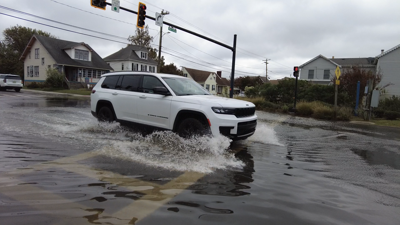BERLIN, Md. - Flooding topped the agenda as nine Delmarva mayors gathered Wednesday for a regional forum hosted by the Salisbury Area Chamber of Commerce, with leaders from coastal towns describing an urgent push for funding and engineering help before the next nor’easter.
Chincoteague Mayor Denise Bowden said the town has applied for permits and money to build about 700 feet of bulkhead to protect vulnerable areas on the south side of the island. She said federal uncertainty is slowing the pace of state support and pledged to keep lobbying state and federal agencies.
“Across Delmarva we’re dealing with flooding,” Bowden said. “We’re trying to get the Army Corps of Engineers to come in and do their study. Once the government reopens and gets things back on track, I intend to be that squeaky wheel. We need help.”
Crisfield Mayor Darlene Taylor outlined a two-track approach. City crews and partners are working on near-term drainage fixes, including clearing ditches and checking tide gates, while the city advances a long-range plan that combines raised roads, higher bulkheads and new berms to form a continuous barrier around town.
“We’re improving the drainage system now while we wait on the bigger picture,” Taylor said. “Between the berms, raised roads and elevating the bulkheads, we believe we can protect our town through the hundred-year storm.”
Ocean City Mayor Rick Meehan said the resort’s dune and beach-replenishment system has protected the oceanfront for decades, but maintenance cycles are critical after recent erosion. He also reiterated the city’s push to dualize Route 90 before a future replacement of the Route 50 bridge to ensure evacuation capacity and day-to-day traffic flow if closures occur.
Beyond flooding, the forum touched on public safety and cooperation with federal agencies, along with housing and workforce issues that shape whether young people can build careers locally. Meehan pointed to a property tax rebate program for those who buy homes and live in them as a primary residence for at least five years, part of a broader effort to keep graduates and young professionals in the region.
Still, water remained the through line. Bowden argued that smaller coastal communities should not be overlooked when larger cities receive storm-recovery funds. Taylor said Crisfield is piecing together grants and technical support but needs sustained investment to move from interim fixes to permanent protection. Both mayors said coordination with the Army Corps is essential to align local projects with federal standards and to fast-track designs that are ready to build.
The shared message from the mayors was that design work, permits and local maintenance can only go so far without dollars. Towns are seeking help to match what they describe as ready-to-go projects that guard homes, businesses and critical roads.
As leaders digest the latest storm’s damage, they say success will be measured in concrete steps. For Chincoteague, that means bulkhead approvals and funding that move from paperwork to piling. For Crisfield, it means turning a townwide barrier concept into phases that can break ground. For Ocean City, it means keeping erosion-control work on schedule while pressing for highway upgrades that support emergency planning.
With hurricane season not yet over and winter nor’easters on the horizon, the region’s mayors framed flooding as a year-round test. Their goal is simple: convert plans into protection before the next high water arrives.



